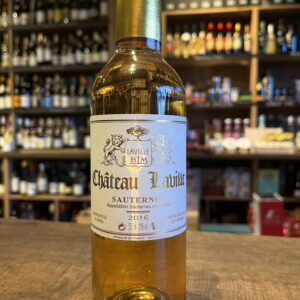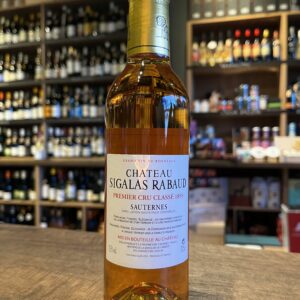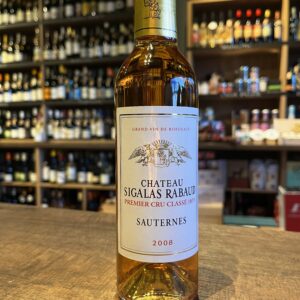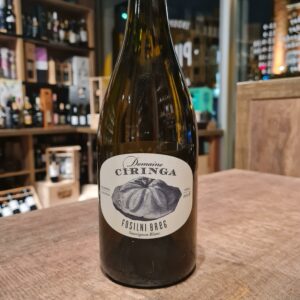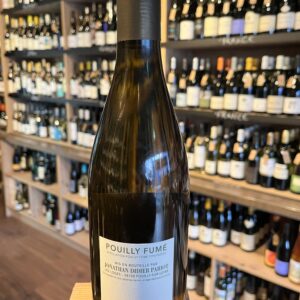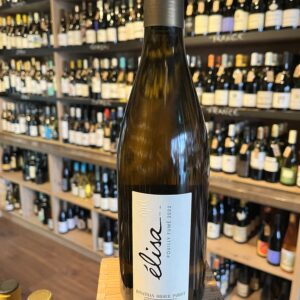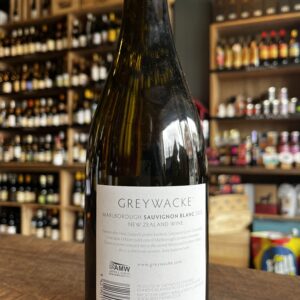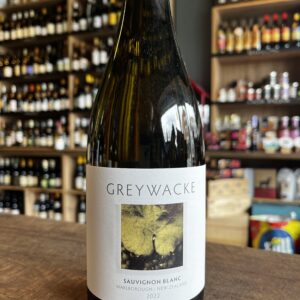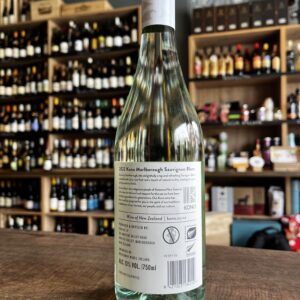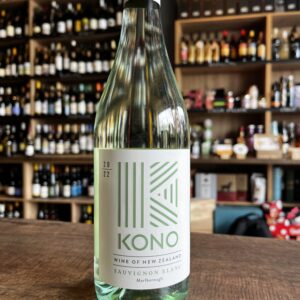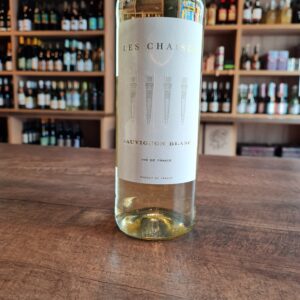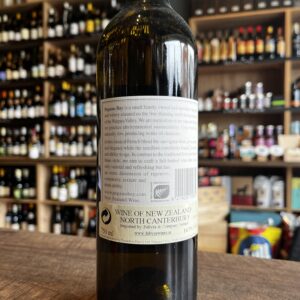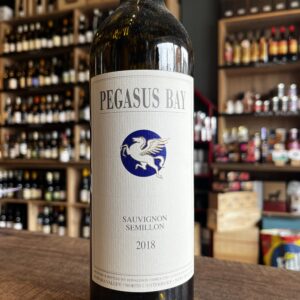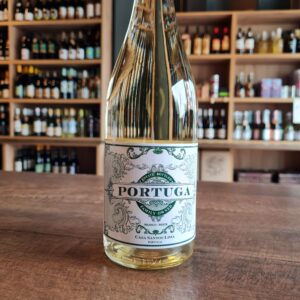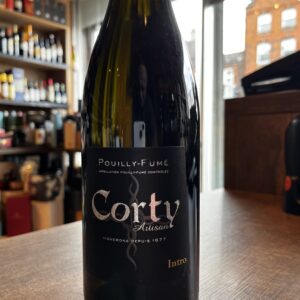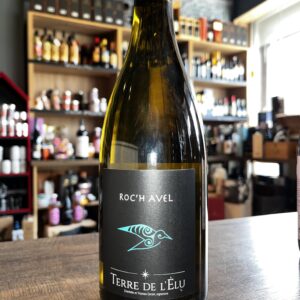Sauvignon blanc is a green-skinned grape variety that originates from the Bordeaux region of France. The grape most likely gets its name from the French words sauvage (“wild”) and blanc (“white”) due to its early origins as an indigenous grape in South West France.
-
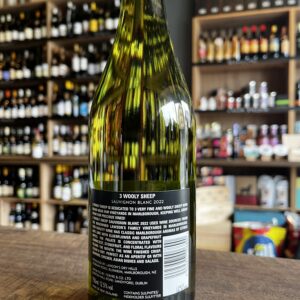
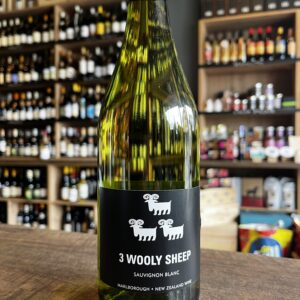 This quality wine has classic Marlborough aromas of citrus and limes with elderflower and grapefruit notes. The palate is concentrated with lemon zest, stonefruit and floral flavours filling the mouth. The wine finishes crisp, clean and dry. Perfect as an aperitif or with seafood, chicken, Asian dishes and salads.
This quality wine has classic Marlborough aromas of citrus and limes with elderflower and grapefruit notes. The palate is concentrated with lemon zest, stonefruit and floral flavours filling the mouth. The wine finishes crisp, clean and dry. Perfect as an aperitif or with seafood, chicken, Asian dishes and salads. -
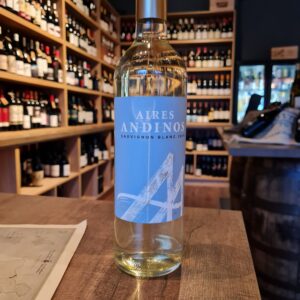 What a wonderfully crisp glass of white wine made from Sauvignon Blanc. The grape that you don't see much in Argentina but offers an excellent wine at the right height. Well, that is a must with this Aires Andinos Sauvignon Blanc, because the vineyards are at a very high altitude in Mendoza. This gives the vines a lot of cooling and that gives a unique taste to this white wine. The aires Andinos winery has invested a lot in recent years and we can taste that. The wines have become purer and riper and as a result have become intensely popular in Argentina. In the glass, this white Aires Andinos Sauvignon Blanc turns pale yellow with green hues. It smells of notes of freshly cut grass, citrus and of course some grapefruit. Just waltz with the glass and we also smell some green asparagus and bell pepper. In the mouth, this Sauvignon Blanc has a fresh feeling on the tongue with light acidity. Lots of fruitiness of apple, lime and grapefruit that lingers in the aftertaste.
What a wonderfully crisp glass of white wine made from Sauvignon Blanc. The grape that you don't see much in Argentina but offers an excellent wine at the right height. Well, that is a must with this Aires Andinos Sauvignon Blanc, because the vineyards are at a very high altitude in Mendoza. This gives the vines a lot of cooling and that gives a unique taste to this white wine. The aires Andinos winery has invested a lot in recent years and we can taste that. The wines have become purer and riper and as a result have become intensely popular in Argentina. In the glass, this white Aires Andinos Sauvignon Blanc turns pale yellow with green hues. It smells of notes of freshly cut grass, citrus and of course some grapefruit. Just waltz with the glass and we also smell some green asparagus and bell pepper. In the mouth, this Sauvignon Blanc has a fresh feeling on the tongue with light acidity. Lots of fruitiness of apple, lime and grapefruit that lingers in the aftertaste. -
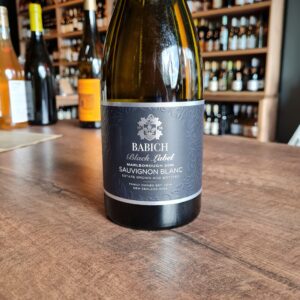 The Babich family hails from Croatia and first bought land in New Zealand in 1916. The winery is now in its third generation. Fruit for this wine comes from a variety of its estate-owned vineyards which are sustainable or organic. Most of the juice for this wine is fermented in stainless steel with a small percentage in old oak. Crafted with food in mind-weighty, ripe, tropical fruit, flavoured style, rich and rounded. Pair it with veal, seafood (oysters) or a chicken dish.
The Babich family hails from Croatia and first bought land in New Zealand in 1916. The winery is now in its third generation. Fruit for this wine comes from a variety of its estate-owned vineyards which are sustainable or organic. Most of the juice for this wine is fermented in stainless steel with a small percentage in old oak. Crafted with food in mind-weighty, ripe, tropical fruit, flavoured style, rich and rounded. Pair it with veal, seafood (oysters) or a chicken dish. -
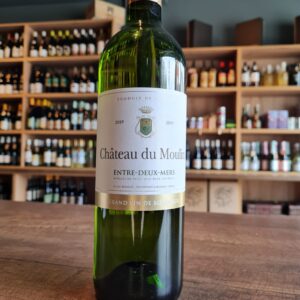 A thoroughly delightful white Bordeaux, made from a blend of Semillon, Sauvignon Blanc, and Muscadelle. Very aromatic with notes of white peach and fresh garden herbs, highlighted with bright citrus rind and mineral nuances. Easy breazy, this is lovely go-to summer wine to enjoy as an aperitif or with seafood dishes. YUM!
A thoroughly delightful white Bordeaux, made from a blend of Semillon, Sauvignon Blanc, and Muscadelle. Very aromatic with notes of white peach and fresh garden herbs, highlighted with bright citrus rind and mineral nuances. Easy breazy, this is lovely go-to summer wine to enjoy as an aperitif or with seafood dishes. YUM! -
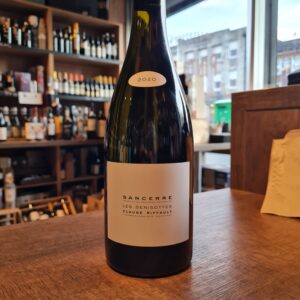 Stéphane Riffault (Claude’s son and now the owner of the estate) is turning out Sancerre bottlings that are the envy of many producers twice his age. As David Schildknecht put it, “Make no mistake: this address in the hamlet of Maison Salle (Sury-en-Vaux) is now one of the five or six most exciting estates in the Sancerre appellation.” Given that Stephane’s holdings represent 4-tenths of 1 percent of the appellation, he is clearly doing something right. Based in the village of Sury-en-Vaux, Stéphane Riffault works 33 different parcels in 8 different lieu-dits spread across four villages. The 13.5 hectares of vines are plowed, and no synthetic material is used. Starting in 2017, the property has been certified organic by ECOCERT and biodynamic by BIODYVIN. Unlike most Sancerre producers, the entire harvest is carried out by hand, and extensive sorting occurs before the grapes are crushed. Stéphane’s wife, Benedicte, leads the harvest team while Stéphane manages the sorting and press during harvest. Most of the domaine’s holdings are planted on the soft limestone soil called terres blanches, with some parcels on calliottes and silex. Minor, judicious uses of oak help to add length to the already precise, site-expressive, and vertical bottlings. All the parcels are vinified separately, and except for the rosé, all the wines are bottled unfiltered. Having studied and worked in Burgundy (and closely with Olivier Leflaive), it’s easy to see the Burgundian influence in Stéphane’s wines. The mastery of minerality standing shoulder–height with the wood is rarely duplicated in Sancerre. Regardless of his parcels’ exposition (many are south-facing), Riffault’s wines are always crisp and highcut with a jeweled delineation that speaks to the precision and attention these wines get. These are not your daddy’s (or his daddy, Claude’s) Sancerres. Sancerre Les Denisottes Les Denisottes comes from a lieu-dit located quite close to the domaine’s cellar. Here the terres blanches soils are deeper and more pebbly than rocky and producing a richer style of Sancerre – one that requires a longer élevage in barrel, and released with a greater capacity to age.
Stéphane Riffault (Claude’s son and now the owner of the estate) is turning out Sancerre bottlings that are the envy of many producers twice his age. As David Schildknecht put it, “Make no mistake: this address in the hamlet of Maison Salle (Sury-en-Vaux) is now one of the five or six most exciting estates in the Sancerre appellation.” Given that Stephane’s holdings represent 4-tenths of 1 percent of the appellation, he is clearly doing something right. Based in the village of Sury-en-Vaux, Stéphane Riffault works 33 different parcels in 8 different lieu-dits spread across four villages. The 13.5 hectares of vines are plowed, and no synthetic material is used. Starting in 2017, the property has been certified organic by ECOCERT and biodynamic by BIODYVIN. Unlike most Sancerre producers, the entire harvest is carried out by hand, and extensive sorting occurs before the grapes are crushed. Stéphane’s wife, Benedicte, leads the harvest team while Stéphane manages the sorting and press during harvest. Most of the domaine’s holdings are planted on the soft limestone soil called terres blanches, with some parcels on calliottes and silex. Minor, judicious uses of oak help to add length to the already precise, site-expressive, and vertical bottlings. All the parcels are vinified separately, and except for the rosé, all the wines are bottled unfiltered. Having studied and worked in Burgundy (and closely with Olivier Leflaive), it’s easy to see the Burgundian influence in Stéphane’s wines. The mastery of minerality standing shoulder–height with the wood is rarely duplicated in Sancerre. Regardless of his parcels’ exposition (many are south-facing), Riffault’s wines are always crisp and highcut with a jeweled delineation that speaks to the precision and attention these wines get. These are not your daddy’s (or his daddy, Claude’s) Sancerres. Sancerre Les Denisottes Les Denisottes comes from a lieu-dit located quite close to the domaine’s cellar. Here the terres blanches soils are deeper and more pebbly than rocky and producing a richer style of Sancerre – one that requires a longer élevage in barrel, and released with a greater capacity to age. -
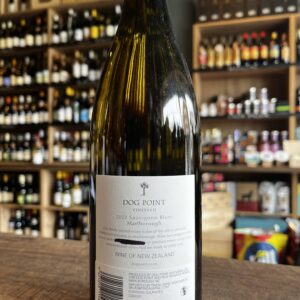
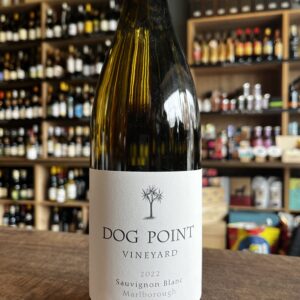 Dog Point Vineyard is New Zealand's largest certified organic vineyard by Biogro NZ. We are family owned and one of the oldest privately established vineyards, located on the hill slopes of the Southern Valleys of Marlborough, New Zealand. Marlborough is blessed with one of the sunniest and driest climates in New Zealand. The significant diurnal temperature range between cool nights and sunny days allows ideal conditions for the long slow ripening of grapes. Soils are crucial to the character of our wine. Most soils have been laid down within the last 14,000 years carved and eroded by glaciers in the high country and carried down to the coast by melt-water rivers. Older well-established vines are situated on free draining silty clay loams. This is supplemented with more recent plantings on closely planted hillside blocks on soils with a clay loam influence. Pair with fresh, simple seafood dishes especially oysters. Also compliments goat's cheese well
Dog Point Vineyard is New Zealand's largest certified organic vineyard by Biogro NZ. We are family owned and one of the oldest privately established vineyards, located on the hill slopes of the Southern Valleys of Marlborough, New Zealand. Marlborough is blessed with one of the sunniest and driest climates in New Zealand. The significant diurnal temperature range between cool nights and sunny days allows ideal conditions for the long slow ripening of grapes. Soils are crucial to the character of our wine. Most soils have been laid down within the last 14,000 years carved and eroded by glaciers in the high country and carried down to the coast by melt-water rivers. Older well-established vines are situated on free draining silty clay loams. This is supplemented with more recent plantings on closely planted hillside blocks on soils with a clay loam influence. Pair with fresh, simple seafood dishes especially oysters. Also compliments goat's cheese well -
Out of stock
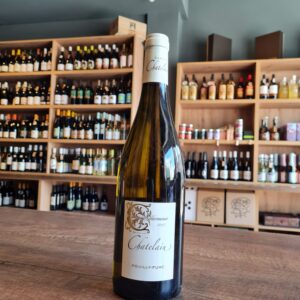 The Chatelain family has worked the vineyards of Pouilly-sur-Loire since the 1630s. Today the family farm is run by Jean-Claude and Geneviève Chatelain, the 11th generation of winemakers from Domaine Chatelain. The grapes for Les Chailloux are grown on the St. Andelain Hill with its clay and siliceous soils strewn with pebbles and flint; the wine is aged ‘sur lie’ prior to bottling in the spring. Light yellow-gold; the wine is vivid, aromatic and minerally on the nose, followed by a spicy flint (silex) character on the palate.
The Chatelain family has worked the vineyards of Pouilly-sur-Loire since the 1630s. Today the family farm is run by Jean-Claude and Geneviève Chatelain, the 11th generation of winemakers from Domaine Chatelain. The grapes for Les Chailloux are grown on the St. Andelain Hill with its clay and siliceous soils strewn with pebbles and flint; the wine is aged ‘sur lie’ prior to bottling in the spring. Light yellow-gold; the wine is vivid, aromatic and minerally on the nose, followed by a spicy flint (silex) character on the palate. -
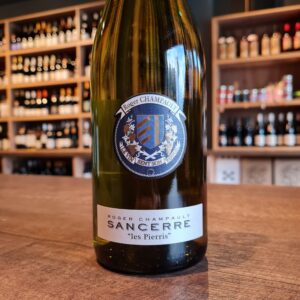 Five generations of traditional winemaking from the estate of Roger Champault, modern thermoregulation techniques, and carefully chosen soil matching, have produced a Cuvee that is subtle at first, like the rising of a summer breeze, building in its complexity with wispy herbal notes and abundant florals that dance across the taste buds like wind through an apple orchard. Delicate, yet so very alive. This wine drinks with a lovely, masterfully structured liveliness and sweet, concentrated finish.Thanks to its abundant fruitiness, it is suitable not only for seafood and crabs but also for more abundant fish dishes; fried salmon, pike perch etc. Also suitable for light meat, especially poultry dishes.Curious note, Sancerre Les Pierris 2008 wine was served at the wedding dinner of Princess Victoria and Daniel of Sweden.
Five generations of traditional winemaking from the estate of Roger Champault, modern thermoregulation techniques, and carefully chosen soil matching, have produced a Cuvee that is subtle at first, like the rising of a summer breeze, building in its complexity with wispy herbal notes and abundant florals that dance across the taste buds like wind through an apple orchard. Delicate, yet so very alive. This wine drinks with a lovely, masterfully structured liveliness and sweet, concentrated finish.Thanks to its abundant fruitiness, it is suitable not only for seafood and crabs but also for more abundant fish dishes; fried salmon, pike perch etc. Also suitable for light meat, especially poultry dishes.Curious note, Sancerre Les Pierris 2008 wine was served at the wedding dinner of Princess Victoria and Daniel of Sweden. -
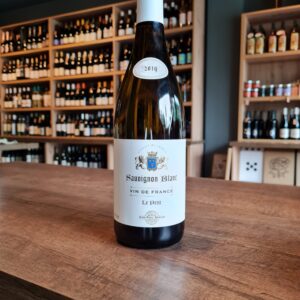 This is an excellent value French Sauvignon Blanc from the Loire valley and resembles the big Sancerre wines of the region . This Petit has nothing petit about it and has an outstanding quality and is very flexible. Can be drunk on it's own or paired with grilled trout, bass or fresh goats' cheese. Jean Paul Seguin winery is situated in the small village of Verdigny in the Sancerre region, the Fournier family has been making wine for many generations. The estate has grown from 5 hectares in 1950 to almost 30 hectares today, divided over the appellations of Mentou Salon, Pouilly-Fumé and Sancerre. The improvement made in vinification techniques and the permanent concern about quality result in well-balanced wines of great diversity. Enjoy this wine from the Loire without paying the big prices of its counterparts
This is an excellent value French Sauvignon Blanc from the Loire valley and resembles the big Sancerre wines of the region . This Petit has nothing petit about it and has an outstanding quality and is very flexible. Can be drunk on it's own or paired with grilled trout, bass or fresh goats' cheese. Jean Paul Seguin winery is situated in the small village of Verdigny in the Sancerre region, the Fournier family has been making wine for many generations. The estate has grown from 5 hectares in 1950 to almost 30 hectares today, divided over the appellations of Mentou Salon, Pouilly-Fumé and Sancerre. The improvement made in vinification techniques and the permanent concern about quality result in well-balanced wines of great diversity. Enjoy this wine from the Loire without paying the big prices of its counterparts -
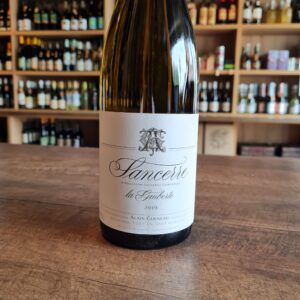 Stone fruit - check! Mineral - check! Floral - check! This wine is definitely ticking off all the right boxes! The minerality of saline and limestone sit on the tip of the tongue and linger through the entire taste. Light bodied, dry, moderate acidity, and a slightly exaggerated finish noted with blanched almonds and lemon rind bring the sip to an end. Time for another! An instant classic from a classic region! The Alain Gueneau Sancerre "La Guiberte" comes from a small family-owned estate at the Eastern end of France's Loire valley. You'll still find the grape's signature citrus freshness and a slight grassiness, but examples from Sancerre lean more towards restraint, minerality, and elegance. The secret is not only in Northern France's cooler climate, but also in the region's soil — a swathe of ancient clay-calcareous deposits that stretches from England's famous white cliffs of Dover across the channel and into Northern France. Alain and daughter Elisa are the 2nd and 3rd-generation of the Gueneau family to farm this land, three quarters of which is planted to Sauvignon Blanc vines with an average age of about 25 years. Enjoy this delicious, refreshing bottle (well chilled, of course!) now or over the next 3 years.
Stone fruit - check! Mineral - check! Floral - check! This wine is definitely ticking off all the right boxes! The minerality of saline and limestone sit on the tip of the tongue and linger through the entire taste. Light bodied, dry, moderate acidity, and a slightly exaggerated finish noted with blanched almonds and lemon rind bring the sip to an end. Time for another! An instant classic from a classic region! The Alain Gueneau Sancerre "La Guiberte" comes from a small family-owned estate at the Eastern end of France's Loire valley. You'll still find the grape's signature citrus freshness and a slight grassiness, but examples from Sancerre lean more towards restraint, minerality, and elegance. The secret is not only in Northern France's cooler climate, but also in the region's soil — a swathe of ancient clay-calcareous deposits that stretches from England's famous white cliffs of Dover across the channel and into Northern France. Alain and daughter Elisa are the 2nd and 3rd-generation of the Gueneau family to farm this land, three quarters of which is planted to Sauvignon Blanc vines with an average age of about 25 years. Enjoy this delicious, refreshing bottle (well chilled, of course!) now or over the next 3 years. -
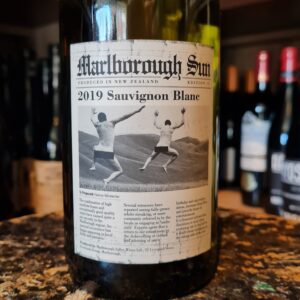 Fantastic New Zealand Sauvignon that will tick all the boxes. The extraordinary label of this wine and the bright recognizable taste have created a direct connection between the Marlborough Sun brand and consumers all over the world. With the growing popularity of Marlborough Valley wines, Saint Clair conceived the idea of creating an affordable, non-pompous wine aimed at attracting new consumers who are not fans of the drink. The progressive technologies of winemaking of the New World, the peculiarities of the terroir of the valley, the varieties that have proven themselves most successfully in the local microclimate and the human factor, have found their reflection in the wines of Marlborough Sun. The inspiration for the labels came from a newspaper article about an unusual phenomenon that has swept the region. It is recommended to serve chilled to a temperature of 8-10 degrees, as a supplement to vegetarian dishes, as well as salmon and tuna.
Fantastic New Zealand Sauvignon that will tick all the boxes. The extraordinary label of this wine and the bright recognizable taste have created a direct connection between the Marlborough Sun brand and consumers all over the world. With the growing popularity of Marlborough Valley wines, Saint Clair conceived the idea of creating an affordable, non-pompous wine aimed at attracting new consumers who are not fans of the drink. The progressive technologies of winemaking of the New World, the peculiarities of the terroir of the valley, the varieties that have proven themselves most successfully in the local microclimate and the human factor, have found their reflection in the wines of Marlborough Sun. The inspiration for the labels came from a newspaper article about an unusual phenomenon that has swept the region. It is recommended to serve chilled to a temperature of 8-10 degrees, as a supplement to vegetarian dishes, as well as salmon and tuna. -
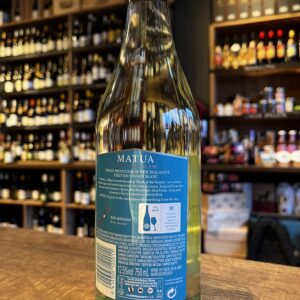
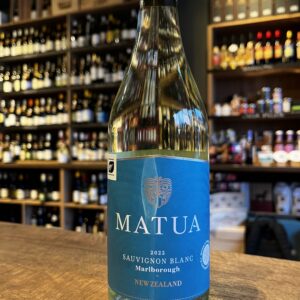 This wine represents the legend of Kupe tangling with a giant octopus who kept stealing all his fish off the hook. During the ensuing fight the beast's tentacles gouged out the Marlborough Sounds and Kupe cut out its eyes which he placed on two rocks known today as Nga Whatu ' The Eyes'. It’s hard to separate New Zealand and Sauvignon Blanc these days, but Matua were the first to put them together, over 40 years ago. You could say They've changed the way the world enjoys white wine. As the Head of the Family (the Maori translation of Matua) They have a tradition of telling stories as a way of passing on knowledge to the next generation. Their most famous winegrowing regions set the scene for some great legendary historical folklore. Wines match dishes from cooked salmon, lettuce, chicken and mushrooms.
This wine represents the legend of Kupe tangling with a giant octopus who kept stealing all his fish off the hook. During the ensuing fight the beast's tentacles gouged out the Marlborough Sounds and Kupe cut out its eyes which he placed on two rocks known today as Nga Whatu ' The Eyes'. It’s hard to separate New Zealand and Sauvignon Blanc these days, but Matua were the first to put them together, over 40 years ago. You could say They've changed the way the world enjoys white wine. As the Head of the Family (the Maori translation of Matua) They have a tradition of telling stories as a way of passing on knowledge to the next generation. Their most famous winegrowing regions set the scene for some great legendary historical folklore. Wines match dishes from cooked salmon, lettuce, chicken and mushrooms. -
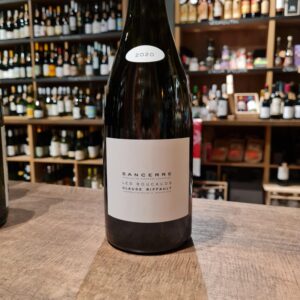 At barely 30 years old, Stephane Riffault (Claude’s son and now owner of the estate) is turning out Sancerre bottlings that are the envy of many producers twice his age. As David Schildknecht put it, “make no mistake: this address in the hamlet of Maison Salle (Sury-en-Vaux) is now one of the five or six most exciting estates in the Sancerre appellation.” Given that Stephane’s holdings represent 4 tenths of 1 percent of the appellation, this kid is clearly doing something right. Based in the village of Sury-en-Vaux, the domaine works 33 different parcels in 6 different lieu-dits spread across 4 villages. The 13.5 hectares of vines are plowed and no synthetic material is used. Unlike most Sancerre producers, the entire harvest is carried out by hand and an extensive sorting takes place before the grapes are crushed. Stephane’s wife, Benedicte, leads the harvest team while Stephane manages the sorting and press during harvest. Most of the domaine’s holdings are planted on the soft limestone soil called Terres Blanches with some parcels on calliottes and silex. Small, judicious uses of oak help to add length to the already precise and vertical bottling. All of the parcels are vilified separately and with the exception of the rose, all the wines are bottled unfiltered. Having studied and worked in Burgundy (and closely with Olivier Leflaive), it’s easy to see the Burgundian influence in Stephane’s wines. The mastery of minerality standing shoulder-height with the wood is rarely duplicated in Sancerre. Regardless of the exposition of his parcels (many are south-facing), Riffault’s wines are always crisp and high-cut with a jeweled sort of delineation that speaks to the precision and attention these wines get. These are not your daddy’s (or his daddy’s) Sancerres.
At barely 30 years old, Stephane Riffault (Claude’s son and now owner of the estate) is turning out Sancerre bottlings that are the envy of many producers twice his age. As David Schildknecht put it, “make no mistake: this address in the hamlet of Maison Salle (Sury-en-Vaux) is now one of the five or six most exciting estates in the Sancerre appellation.” Given that Stephane’s holdings represent 4 tenths of 1 percent of the appellation, this kid is clearly doing something right. Based in the village of Sury-en-Vaux, the domaine works 33 different parcels in 6 different lieu-dits spread across 4 villages. The 13.5 hectares of vines are plowed and no synthetic material is used. Unlike most Sancerre producers, the entire harvest is carried out by hand and an extensive sorting takes place before the grapes are crushed. Stephane’s wife, Benedicte, leads the harvest team while Stephane manages the sorting and press during harvest. Most of the domaine’s holdings are planted on the soft limestone soil called Terres Blanches with some parcels on calliottes and silex. Small, judicious uses of oak help to add length to the already precise and vertical bottling. All of the parcels are vilified separately and with the exception of the rose, all the wines are bottled unfiltered. Having studied and worked in Burgundy (and closely with Olivier Leflaive), it’s easy to see the Burgundian influence in Stephane’s wines. The mastery of minerality standing shoulder-height with the wood is rarely duplicated in Sancerre. Regardless of the exposition of his parcels (many are south-facing), Riffault’s wines are always crisp and high-cut with a jeweled sort of delineation that speaks to the precision and attention these wines get. These are not your daddy’s (or his daddy’s) Sancerres.


